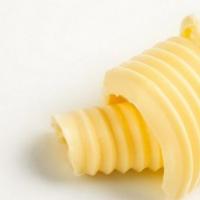Installing hinges on an interior door: types of awnings, installation methods. Video instructions for installing different loops with your own hands. Installing hinges on interior doors - detailed instructions How to install door hinges
It should be noted that the inset door hinges- this is a work, in principle, simple, but requiring precision and accuracy. It will also require a rather limited set of tools. How to do everything right, is described in this article.
Usually, assembled doors do not require the installation of locks and hinges - everything has already been done at the enterprise. Even if purchased  a disassembled block, it is not difficult to order a similar service in the carpentry shop of a building supermarket.
a disassembled block, it is not difficult to order a similar service in the carpentry shop of a building supermarket.
There, the craftsmen use a special machine and do the work as accurately as possible, moreover, for a relatively low fee. Thus, when there is no self-confidence, we advise you to choose the option named above - inept actions often lead to damage to both the doors and the box.
Hinge types
Before buying hinges, you need to understand their features and designs on the market. This will allow you to choose the right model for your particular case.
First of all, it matters which side your wooden doors open. So, the loops are:
- right-handed;
- left-sided.
 If you have not yet clarified this point for yourself completely, take the universal ones.
If you have not yet clarified this point for yourself completely, take the universal ones.
To determine the type, you need to stand on the side in which the canvas should swing open and see where its movement will be directed (to the right or left) - the loops are selected accordingly.
They also differ in material.
- brass (they are plastic and therefore not suitable for heavy sashes);
- floatable (also not very strong);
- steel (the most reliable and durable).
Varieties:
- the most popular version of the hinges is card hinges, with mounting plates on the sides;
- corner ones are used for pendulum type doors;
- screwed (screw-in) plates do not have, but are equipped with threaded pins (suitable for light MDF sheets);
- secret - used on entrance doors and with outside not visible;
- Italian ones are very reminiscent of furniture ones that are familiar to us.
 They are also distinguished by the type of installation:
They are also distinguished by the type of installation:
- invoices are mounted directly on the surface of the canvas and the box;
- mortise require flush installation in special recesses;
- screwed ones need only holes in both the box and the sash itself.
This is a special non-separable type of card loops, the design of which allows you to do without a tie-in. It is she who is most suitable for inexperienced home craftsmen.
The butterfly is supplied with doors that are mounted in an already installed box.
This option has a number of disadvantages:
- to remove the canvas, it is necessary to unscrew the screws;
- sometimes distortions can form over time;
- not suitable for massive wooden doors;
- the surface on which they are attached must be perfectly flat.
How to install a butterfly with your own hands? You will need these tools:
- screwdriver or screwdriver;
- drill for wood;
- awl;
- pencil;
- roulette.
 Self-tapping screws are included with the hinges, so there is no need to buy them separately.
Self-tapping screws are included with the hinges, so there is no need to buy them separately.
The order of work is as follows:
- along the edge make indents on each side of 200 mm;
- attach a hanging fixture;
- mark places for screws;
- drill holes (1.5 mm);
- fix loops;
- the door is applied to the box and marks are made on the latter;
- make holes for the screws there and complete the installation.
The procedure itself is quite simple - no template is needed here.
Prepare:
- ruler (30 cm);
- pencil.
- determine the direction of opening;
- at the end we measure 200 millimeters from each corner;
- make notes;
- we apply loops to them with the upper part to the line;
- draw a contour;
- the plate should protrude slightly beyond the end dimension - this will ensure free opening;
- if there is any natural defect at the attachment point, the loops move a little lower.
Loop insert
No complicated tools are needed. Manual frezer, for example, is needed more when installing locks. Prepare:
- a screwdriver (usually you need a Phillips type Ph 1);
- hammer;
- drill with a set of drills;
- chisel;
- cutter;
- awl.
The installation process looks like this:
- loops are temporarily strengthened according to previously made marks;
- they are circled with a cutter, deepening a couple of millimeters, and removed;
- with a chisel and a hammer, a recess is carefully cut out, sufficient to completely immerse the mounting plate;
- the box is assembled on self-tapping screws around the door laid on the floor;
- check the correctness of the markup and notch the perimeter of the groove;
- strengthen the canopies with self-tapping screws, raise the block and check the opening.
How to install screw hinges
For work you will need:
- roulette;
- drill;
- ready template;
- pencil.
The canvas is installed on its side vertically. Further:
- recede from the edges by 20 centimeters;
- fix the template with a clamp;
- drill the necessary holes (their depth corresponds to the length of the guide pin);
- the same is done on the box;
- loops are disassembled and installed in prepared holes;
- the canvas is hung in place;
- adjustment if necessary.
Adjustment is done using special screws by loosening or tightening them:
- if you want to correct the position of the sash in the horizontal plane, turn the top one;
- adjustment of the gap and fit is carried out by the lower screw;
- the middle is needed to correct in the vertical direction.
This video will allow you to better understand how the hinges are mounted on the door:
Greetings, my dear readers.
The topic of this article: " How to embed door hinges«
After we have learned - you can go to the next step and install the door hinges.
The door hinge is the most important element of the door frame, as it ensures the mobility of the door leaf.
Thanks to competent and correct installation, you can avoid such problems in the future as rubbing of doors or jamming them. Eliminate squeaks and distortions of the door leaf.
After reading this article, you will understand that cut door hinges you can do it yourself, without resorting to the help of masters! I am always for saving!Required Tool
To insert loops, we need a simple tool:
- loops
- Hammer
- Chisel set
- Screwdriver or screwdriver
- wedges if
- Pencil
- construction corner
- Construction tape measure
Loop selection
The choice of loops should be approached very thoroughly.
They must not only match the design of the doors, but also perform their functions in order to prevent breakage of the door leaf.
Consider the most popular types:
- straight loops
The most common. They are two rectangular plates on the sides - they are also called "card".
- corner

Absolutely identical to the "card" loops. The only difference is that the plates are made in the form of corners. Are used for pendular and doors with a vestibule.
- Hidden

The hinge on these hinges is "recessed" in the door. Mainly used in the expensive segment of doors.
- screwed

Consist of a rotary axis with pins. Such hinges hold a very low weight and are mounted exclusively on light doors, respectively.
According to the installation method, the loops are divided into:
- Overhead loops - no preparation of the loop landing site is required. They are simply screwed into place with self-tapping screws. These loops include loops - butterflies.
- Screw - just screw into the door
- Mortise - loops under which you want to make a recess. These include "card" and corner loops.
Depending on the door opening side, the hinges are divided into:

- left-sided
- right-sided
- universal
If everything is clear with left and right loops, then universal ones can be used in both cases! (Captain obvious!) Their serious drawback is that they are not separable. Therefore, their tie-in will be a little more difficult.
We make markings on the door beam

I always start marking the door hinges with the door leaf. We retreat from the top and bottom of the door by 20 cm and put marks.

We apply the hinges to the door in such a way that the hinge rods almost touch the door leaf. This is done to achieve free running of the canvas. It is also not worth pushing the hinge strongly - loosen the mount and, under the weight of the door, the hinge will warp.
In order for the loop not to “walk” in your hands, you can grab it with a pair of self-tapping screws, having previously drilled holes of a smaller diameter under them.
We make markings on the loop bar

We transfer the size to the beam. How I do it - on a flat horizontal surface, I combine the assembled door frame with the canvas in compliance with all technological gaps.

Applying a loop - I transfer the marks directly to the beam.

We repeat the operation of tracing the contour.
All these steps are needed when installing overhead or corner hinges.
Installation of simple "card" loops

I start the insertion of the hinges from the door leaf.

After marking, it is necessary to go along the contour with a chisel (I usually use 22 mm), gently tapping with a hammer.
IT IS IMPORTANT TO KNOW:
If you are making a tie-in into wooden doors, then when marking it is necessary to inspect the rack and canvas for knots. If there are any, then we retreat up or down to the distance of the knot.

Then we put the chisel flat - without an angle, side up and remove the material in layers, making a recess under the loop. Repeat all steps for the second loop.
IT IS IMPORTANT TO KNOW:
In no case do not turn over the chisel cutting angle down. When hit with a hammer, the cutting edge will not go along the material, but will go down, choosing more material than necessary. A heavily buried loop will result in door leaf will rest against the box and gradually the door is deformed.
On the door beam, everything is done exactly the same. A little advice for you - for greater convenience, you can unscrew the rack from the door frame and along with the grooves.
Inserting door hinges on an interior door - video
Installation of loops - butterflies

For those who do not want to "bother" with all the above procedures - feel free to purchase loops - butterflies.

Due to the fact that when combined, one part of the loop enters the other, no manipulations with the chisels can be carried out. It is enough to attach the loop to the installation site, drill holes and tighten the loop.
Butterfly loops often bribe beginners with their main advantage - they do not need to make a groove under them. But when installing, you should also take into account a few nuances:
- Butterfly hinges must be absolutely well exposed before installation. As a result of misalignments, the door hinges will spring back or a misalignment will appear when closing.
- Another disadvantage of such hinges is the inability to remove the door leaf without unscrewing the hinge. The same applies to universal loops.
- since the "butterflies" are mounted without a groove, a non-aesthetic gap is formed.
How to embed a loop - a butterfly - video
Installation of corner "card" loops

My friends, all the steps for installing these loops are similar to simple loops. The difference is only in the shape of the loops themselves.
One of the sides is made in the form of an angle at 90°. Usually, interior doors have a technological gap and when closing, the canvas enters the box, but if it is necessary to cut off a cold room from a warm one, then doors with a vestibule are used.
The vestibule is a small protrusion along the entire length of the leaf, which covers the gaps, thereby significantly increasing the insulating properties of the doors.
Installation of hidden hinges

Hidden loops have a number of advantages over the rest:
- very easy care
- they are almost invisible
- increased resistance to cracking
So, in order to correctly insert hidden loops, you must adhere to this algorithm of actions:

- To begin with, we make the markup. It is similar to the methods described above.
- We form a recess under the loop. There is a small nuance here - the whole point is that for the most part the shape of the hidden loops is not rectangular, but rounded. Therefore, if you do not have a router, then "you have to puff." Use a small chisel.
- Now, as when inserting locks, it is necessary to form recesses for the hinge system itself. To do this, use a drill with a crown or with a drill. In order not to “overdo it” with depth, we first measure the loops. So that the result of the work done does not disappoint you, approach it with all possible accuracy. loops plastic windows, allow adjustment in three planes.
Care of door hinges

Any mechanism needs care and loops are no exception.
Before starting work, you need to clean the hinges from accumulated dust and dirt.
The first enemy of the loops, which adversely affects them operational properties- friction. Over time, factory grease loses its characteristics, which leads to the appearance of squeaks and a violation of the ease of movement of the doors.
To avoid this, it is enough to carry out prophylaxis once a year - lubricate the hinges. You can lubricate the detachable hinges with machine oil or lithol, slightly separating the hinge.
For universal hinges, you can use a spray of WD-40.
After the performed operations, the doors must be opened and closed several times to evenly distribute the lubricant. If something from the dirt got on the door leaf, then you need to immediately.
To prevent damage to the paintwork, you should not wipe them with abrasive substances, and you should not paint over the loops, as you did before. Damage to the coating will lead to corrosion of the material and failure of the hinge.
How to lubricate door hinges - video
Conclusion
Well, that's all, my friends.
As you can see do-it-yourself door hinge installation will require patience and attentiveness from you, but if you follow all the above recommendations, then everything will definitely work out for you!
All the best and see you soon!
Anton Tsugunov
Reading time: 4 minutes
If you decide to purchase new beautiful doors, pay attention to whether the kit includes the door leaf, frame, handle and lock, door hinges. If the design is sold without hinges, you have to choose and install them on the door yourself. This process must be taken responsibly, as unsuitable fittings can spoil the appearance of the door, and improper installation can lead to skew of the canvas and problems during operation.
- simplicity and ease of installation;
- the possibility of self-assembly without special skills and tools.
- the design of the canopies does not allow, if necessary, to remove the doors without unscrewing the screws;
- they can not hang doors that have a lot of weight.
Recently, overhead butterfly loops have been especially popular - these are loops without a tie-in, the elegant shape of which resembles a butterfly wing. When folding, one part of the structure is embedded in another, ensuring a minimum thickness.
Mortise
By appearance they resemble invoices, but differ from them in the method of installation: for the installation of mortise hinges, cuts are made at the end of the door leaf and frame. The recesses must correspond to the thickness and dimensions of the wings of the structure.
- relative ease of installation;
- low price.
The downside is the need to cut recesses in parts of the door structure.
Overhead and mortise door hinges are detachable and universal. Universal designs are considered more reliable, as they have a rigid assembly that prevents sagging and loosening of doors.
corner
Not flat wings-plates, but corners are attached to the axial rod of such canopies. They are installed on interior doors in the same way as mortise ones.
Hidden
They differ from all other designs, as they are installed in pre-prepared recesses, sawn out in the box and door leaf.
- inconspicuous fasteners do not violate the aesthetic appearance of the door structure;
- make it possible to adjust the position of the door;
- such loops cannot be cut.
The only drawback is the complexity of installation; without certain skills, you are unlikely to be able to correctly install such loops.
screw-in
In such door hinges, instead of wings, pins are located on the axis, screwed into the door leaf and box. The device has a number of models with a different number of threaded pins designed for different door weights.
- universality (no need to select right and left loops);
- stealth.
- on such hinges you can hang only doors with euro-porch;
- when used on structures made of low-grade brittle material, they can lead to cracking, chipping.
The choice of canopies according to the material of manufacture
Depending on the material, the loops are divided into three types:
- Steel - are considered the most reliable and durable. In its pure form, they are not very attractive, chrome-plated models look more aesthetically pleasing.
- Brass - beautiful in appearance, but less durable due to the plasticity of the material. Can be polished or chrome plated.
- Brass-plated - made of zinc or steel alloys, have a layer of brass on top, often additionally coated with enamel or compositions that imitate noble metals.
A few words about butterflies
If you decide to stay on the easiest version of the hinges to install, it is advisable to purchase them in specialized stores. When buying, make sure that the sides of the structure fold correctly, otherwise bumps will form during installation, and the door will not fit well or begin to spring.
In connection with the overhead method of installation and the properties of the design, "butterfly" awnings are intended mainly for light interior doors. Thanks to its aesthetic shape, clean installation that goes without disturbing decorative finishes door leaf, great for hanging modern doors with original design.
Consider the installation sequence of popular butterfly hinges on the door, which are mounted without cutting into the door leaf and frame.
An important advantage of butterfly loops is the exceptional ease of installation: you do not need the ability to handle carpentry tools.
- First, the primary marking of the location of the loop is made. To do this, you need to measure the distance from the upper and lower edges of the door leaf - it must be at least 200 mm. Attach the inside of the loop to the place of its future attachment to the canvas and circle the part with a pencil.
Note! The hinges are placed with hinges to the front of the door.
- While holding the loop, mark the points for drilling holes for self-tapping screws with an awl or a thin drill, the diameter of which should not exceed the diameter of the axis of the self-tapping screw.
- Screw the inside of each hinge to the door leaf with self-tapping screws.
- Install the canvas in the box, observing the required clearance, make sure that the upper and lower ends are located correctly (strictly horizontally), and fix it with wedges.
- Mark the location of the outer part of the hinge, remove the wedges and screw the top hinge to the box.
Important! To avoid breakage or distortion of the hinge, the door must be supported until the lower canopy is installed.
- Set the door leaf in a strictly vertical position.
- Mark the position of the bottom hinge on the box, prepare holes for self-tapping screws.
- Tighten the self-tapping screws and fix the position of the lower hinge correctly.
Hinges are an integral part of the door. They provide opening and closing. Methods for installing door fittings depend on its type. To properly install the hinges, you need the right tool, skills in working with it and knowledge of the main stages of work.
Hardware types
Loops differ from each other in design. They can be of the following types:
When choosing hinges by type, it is worth considering the weight of the canvas and the direction in which it opens. Bilateral are installed on the pendulum type doors, making it possible to open both inside and outside the room.
General rules
How to embed loops depends on their type. But there are general rules that you should follow when installing.

Regardless of the type of loops, the following installation steps are distinguished:
- Markup.
- Cutting recesses and / or holes for fastening.
- Hardware installation.
- Door adjustment.
Tool for the job
Proper installation with your own hands is impossible without the tools necessary for the job. These include:
- pencil, tape measure;
- screwdriver or screwdriver;
- milling cutter;
- chisel;
- drill and drill.

Not all of the tools listed are strictly required. In most cases, it is quite possible to install fittings without using a screwdriver and a router, but with their help, the work will be done faster and better.
Overhead hinges
Overhead mortise hinges are most common. Simple design ensures long and reliable operation. Such fittings will well withstand the weight of a heavy wooden interior door.
Overhead mortise hinges are installed in a specially made recess. To cut it out with your own hands, the bar is applied to the right place and circled around the perimeter with a pencil. Further, a niche is cut out with a milling cutter or chisel. It should be of such depth that the hinge bar enters it completely and is flush with the end of the door.
The hinges are attached to the self-tapping screws that come with the kit. If you are not confident in your skills, then it is better to first fix the fittings on two self-tapping screws, and screw the rest after the structure is in place. In addition, it will facilitate the adjustment process. The hinges will be easier to remove and modify the niche in which they are planted.
You can adjust the operation of the loops by deepening the recess, if it is not deep enough and the canvas rubs against the box from the side of the handle or does not close at all. When these shortcomings are observed from the side of the fittings, then the niche is too deep. The problem is eliminated by placing cardboard or rubber bands under the bar, which will raise it a little.

Height adjustment is made by shifting the hinges up or down, respectively.
Installation of corner hinges
They differ from invoices only in the presence of a bar bend, the angle of which is 90 degrees. They are placed on interior doors with a vestibule.

The installation and principle of operation of corner hinges do not differ from overhead ones. One of them is attached to the canvas, and the second to the box.
Mounting the butterfly loop
Butterfly hinges belong to the overhead type of fittings. Do-it-yourself installation is easier than mortise ones. They do not require special recesses, but are simply superimposed on the end of the door and the frame in the right places and fastened with self-tapping screws.
Butterfly loops are installed on a perfectly flat surface. Otherwise, the bar will not fully adhere to the canvas, and the interior doors will “play”. You can correct this drawback by placing a thin strip of cardboard under the bar on the side where it fits snugly against the door. The bar will rise, and the butterfly loops will lie flat.
Butterfly hinges are not suitable for heavy structures. Under the weight of the canvas, they can be deformed. Therefore, consider this feature before buying accessories.
Screw hinges
Screw hinges are usually installed on rebate doors. Their number depends on the weight of the canvas. On the lungs, it will be enough to mount two screw loops. For heavier ones, sometimes three or even four are used. They also differ in the number of pins. There may be two, three or four.
Screw-in hinges are attached to the canvas and the box with pins that are screwed into the material. Under them, recesses are first made. This will require a special tool. The fittings are installed in such a way that the thread enters completely into the rack of the box. After mounting the counterpart, the interior doors are mounted on the pins and the design is checked for operability.

Screw-in hinges can be adjusted horizontally, height and pressure. Adjustment is made using specially provided holes with a hex wrench.
After installation and adjustment, decorative caps are put on the screw hinges.
Installation of hidden hinges
Do-it-yourself installation of hidden loops is difficult. To do this, you need a tool such as a milling cutter. The fittings are completely hidden in the door leaf, so one chisel is not enough when working.

As with the installation of other types of fittings, we mark the installation site with a pencil. After that, you need to cut out recesses for a hidden loop. At this stage of work, a milling cutter is used. To make niches, you will need a template for inserting door hinges, which comes with the fittings. It is fixed on the tool, and cavities of the desired size are cut out with a milling cutter.
One part of the hidden loop is inserted into the end of the canvas, and the other - into the box. The location of the hinges inside the canvas protects the mechanism from external influences and prolongs the life of the hidden fittings. After the installation is completed, the operation of the door is checked and adjusted.

Adjustment of the work of hidden hinges, as well as screw-in ones, is possible in three directions: horizontally, height and pressure. For this, a hex key is used. After finishing the adjustment, the adjustment holes are hidden under the decorative trims.
If you do not have such a tool as a router, then it is better to entrust the installation of hidden loops to a specialist. Alternatively, you can rent it.
- Screwdriver or screwdriver.
- Self-tapping screws.
- Pencil.
- A set of wedges are needed to align structural elements.
- Building level.
- Drill with thin drills.
- Hammer and chisel.
- The markup is done first. To do this, it is necessary to indent from the upper and lower edges of the canvas by 20 - 25 cm.
- We circle the door hinges along the contour with a pencil.
- Next, you need to use a chisel and a hammer to knock out the recesses along the intended contour. It is worth paying special attention to the thickness of the recess, if you make it too deep, the door will rest against the box. The depth of the pocket should match the thickness of the canopy.
- It is necessary to fix the door in the hatch with wooden wedges. It is necessary to align the canvas using the building level in the position in which it will be in the installed form. The Right Process involves leveling both horizontally and vertically. If the first condition is not met, the door will be difficult to close, the second will lead to independent opening.
- After the door structure is leveled, it is necessary to mark the points of contact between the door canopies and the frame.
- The subsequent actions are similar to the door leaf: a hole for the door hinges is made with a chisel.
Photo 4 Design features: left and right hinges.
In the event that hidden door fittings are installed, it is worth being especially accurate, errors can cause the canvas to warp or malfunction.

Photo 5 Marking for loops is easy to do by attaching the fittings to the canvas and trace the contours with a pencil.
When the door structure is completed, and all the necessary markings have been applied, the time is right for mounting the hinges. The fittings must be attached to the places marked for fasteners, so you can visually assess the correctness of the actions - how symmetrical their location is.
Rules for the selection and installation of fittings for wooden doors
Before purchasing hinged fittings, you need to decide on the type of accessories you need. Removable hinges are distinguished by the opening option door block distinguish between right and left. To correctly determine the required type of hinges, you need to stand in front of the doorway and indicate which side the door handle will be on, if on the right - left hinges are needed, on the left - right ones.

Photo 6 Marking "standing" door frame under the loops.
If the material of the door leaf is wood, then it is necessary to “drown” the hinges in the leaf. This process is done with a sharp knife. To do this, you need to attach the loops to the intended attachment point and make cuts along the contour, going deep into the thickness of the loop. For convenience, cuts are made both vertically and horizontally of the door leaf. If you perform only a one-sided cut, this may lead to delamination of other parts of the wooden surface.

Photo 7 Cutting can be done with a chisel or router.
For the convenience of performing this kind of work with door fittings, you can use special templates for inserting hinges. Due to such blanks, the installation process is significantly accelerated, and the risk of defects is minimized. At its core, the blank fully corresponds to the shape of the part to be installed in the door leaf or frame part, i.e. the deepening of the desired diameter is done without much difficulty, observing all the given contours.
Methods for mounting hinges on interior doors
To install door hardware, you need to prepare the following tools:
[Photo 8 Correct installation of the hinges involves their exact location in the recess made, excluding gaps with the canvas.]
After preparing all necessary tools, you can get to work. We carry out the installation of door hinges:
It is very important to know when applying fittings to the inside of the door, it is worth considering the location of the hinges, which should be facing the front side of the door, i.e. in the direction where the door will open in the future.
Using fasteners when installing hinges
The final stage is fixing the parts with self-tapping screws that come with the hinged structures. Before you start screwing, you must use a drill. In the designated places, grooves are drilled. Such actions must be performed to prevent splitting of the tree, at the time of screwing in the screws. After the work is done, you can begin to fix the loops with self-tapping screws.

Photo 9 Scheme of the structure of the loop and its fasteners.
If you plan to insert hidden loops, then a more complicated installation process is ahead than when choosing other types. Here you will need to make pockets a little deeper for planting loops. For a more precise contour, it is advisable to use a milling machine.
In the same order, the marking of the canvas is performed. Next, you should use the help of a professional, since exceeding the necessary force to press the milling machine contributes to a greater deepening than required, as a result of which the door leaf will be damaged.
When fixing the loops with screws, it is necessary that they fit exactly into the hole made, at an angle of 90 °. Initially, marks are made with a pencil, then the top of the wood is pierced with an awl, then the beginning of the funnel is drilled, and the fasteners are screwed in last. So much action is necessary so that the canvas is not covered with cracks during screwing.
Screwed hinges can be easily distinguished by one appearance. Instead of standard inserts, they have taper pins with internal threads. This option is often used for installation on interior doors. One of the advantages of this type of fittings is the admissibility of adjustment with a hexagon. For an aesthetic appearance, the pins are masked with special caps.
It doesn't matter which hinges were chosen, the main thing is their correct installation. Inserting door hinges is not an easy task, but it is possible to do this process with your own hands, following the indicated recommendations for marking and subsequent installation of any types of door hinges.
 Where is Maksimovskaya Marianna Alexandrovna now
Where is Maksimovskaya Marianna Alexandrovna now Economical salad recipes for the New Year's table
Economical salad recipes for the New Year's table How to accurately understand whether brown discharge instead of menstruation indicates pregnancy
How to accurately understand whether brown discharge instead of menstruation indicates pregnancy What vitamins are in butter
What vitamins are in butter Rules for the preparation of documentation when transferring files to the archive Inventory of transferring files to the archive
Rules for the preparation of documentation when transferring files to the archive Inventory of transferring files to the archive German Gref: biography, personal life, family, wife, children - photo Informal biography of Gref German
German Gref: biography, personal life, family, wife, children - photo Informal biography of Gref German From the Guinness book Gabriel March
From the Guinness book Gabriel March